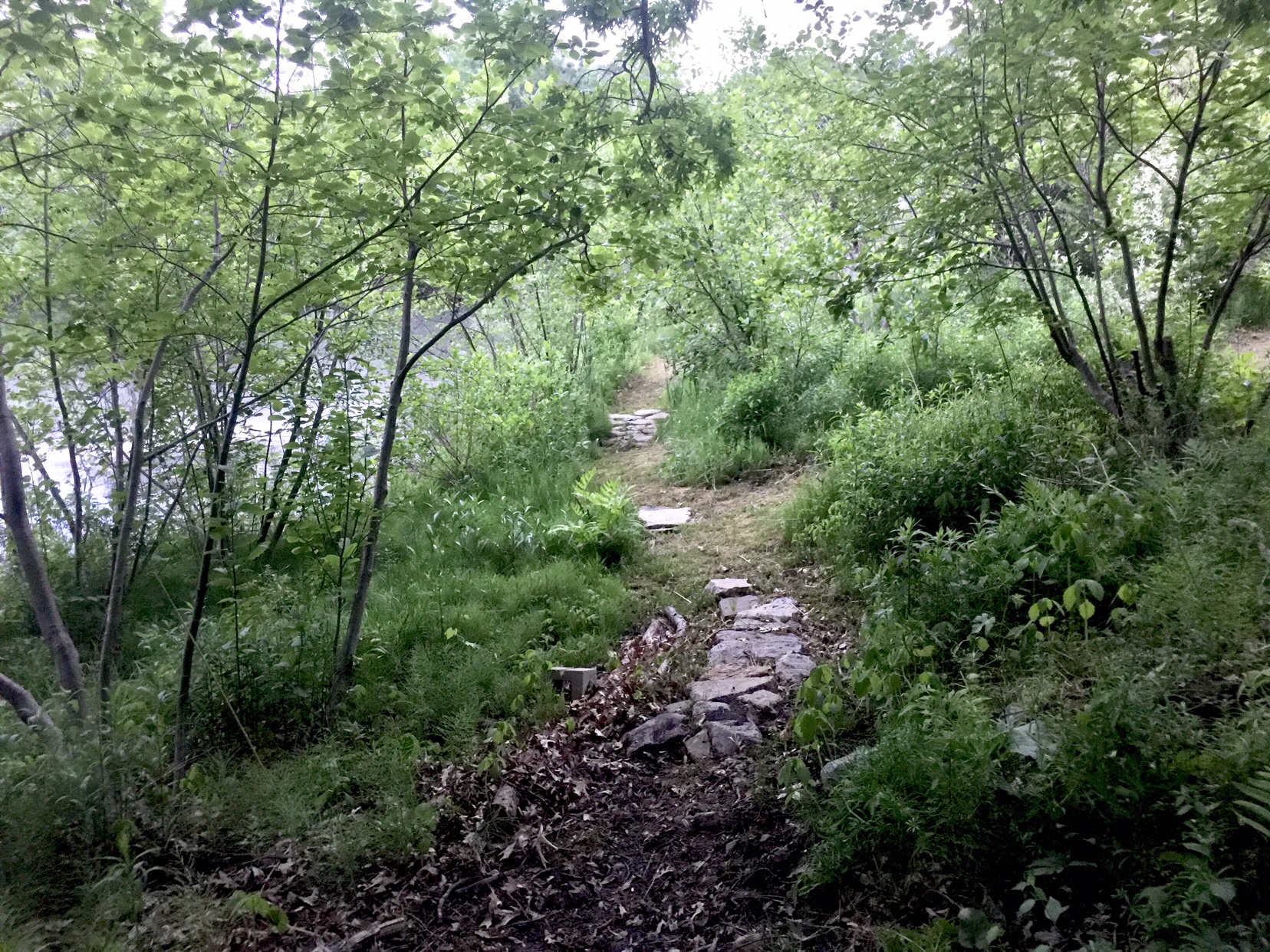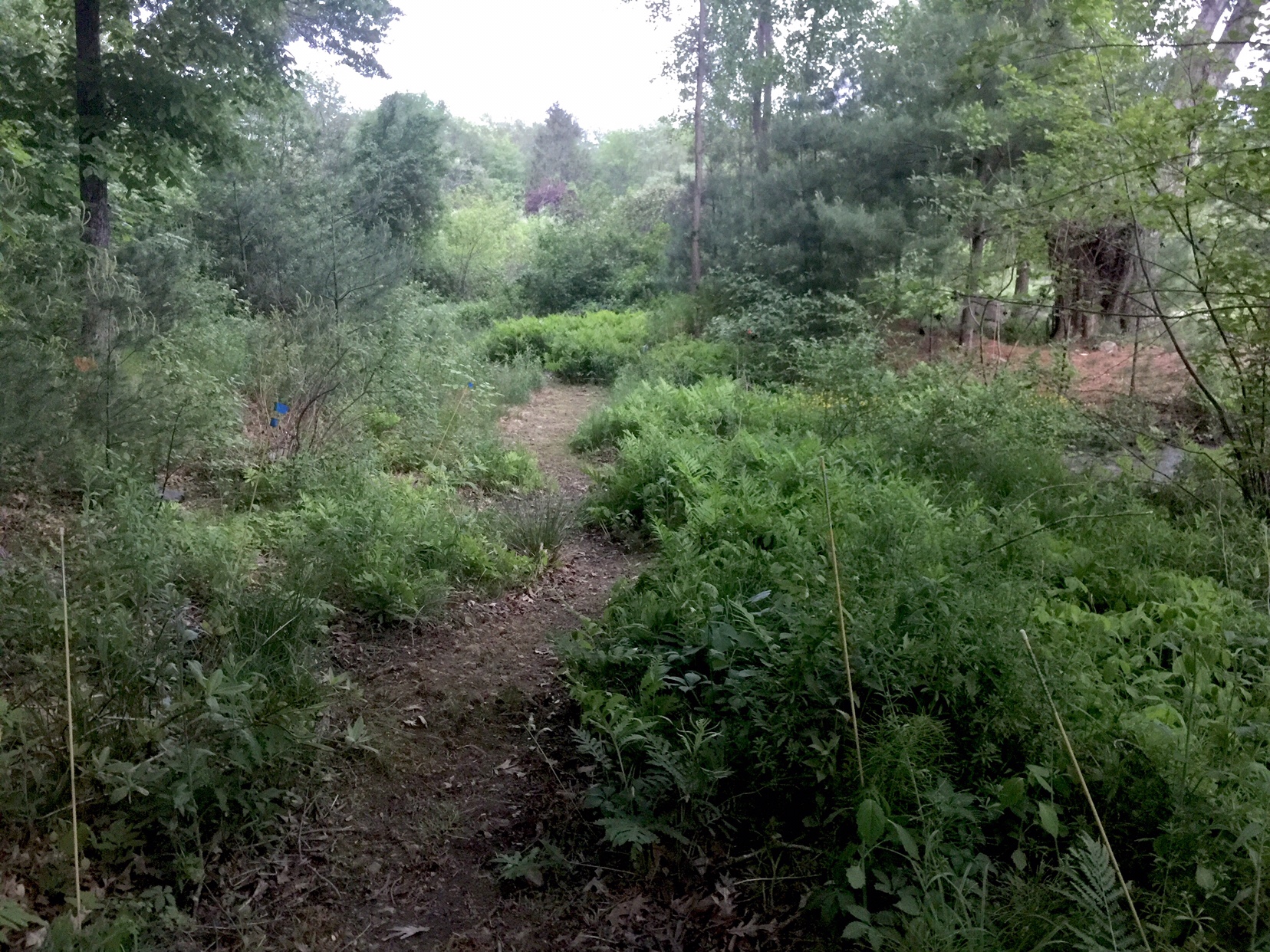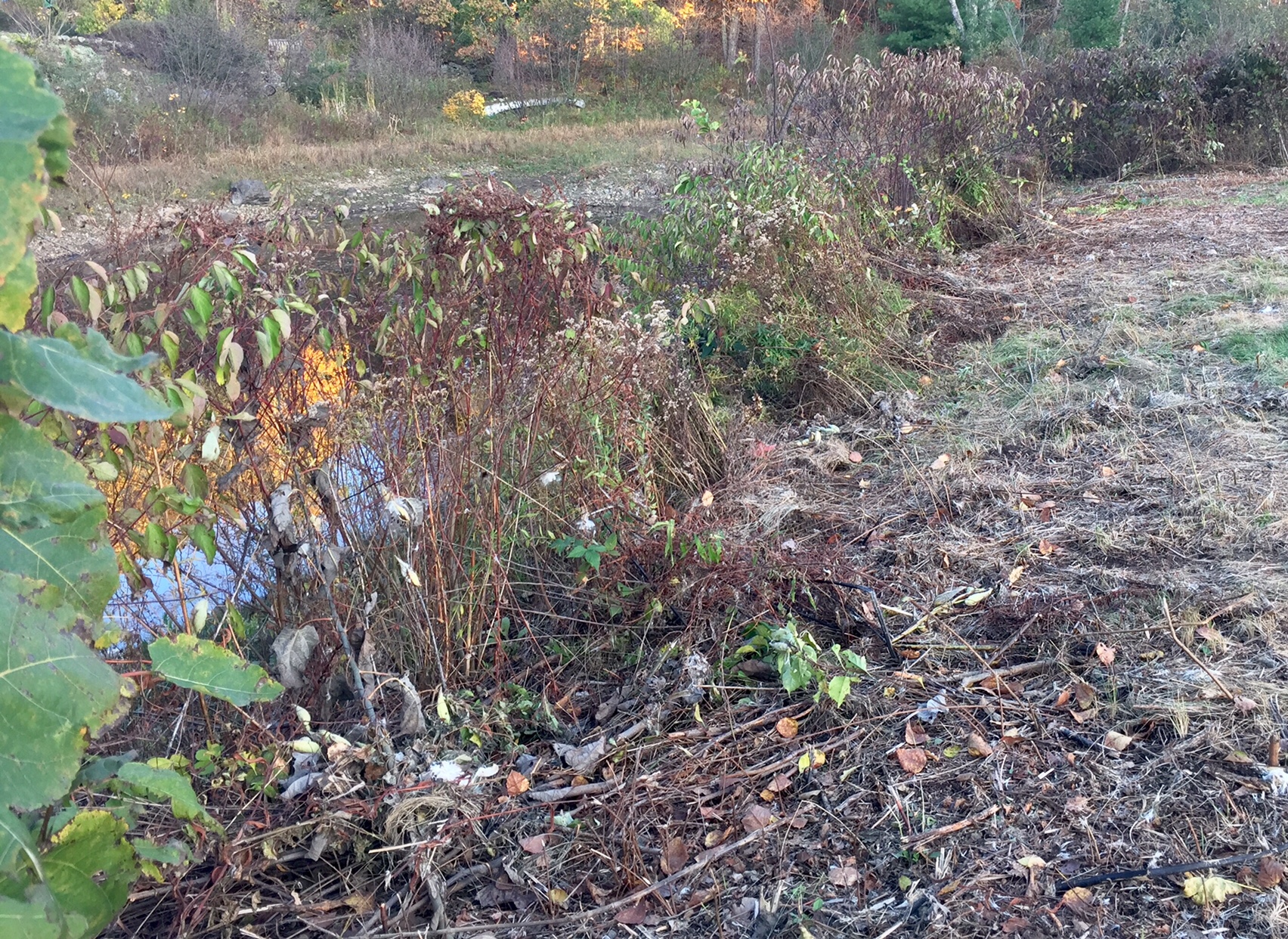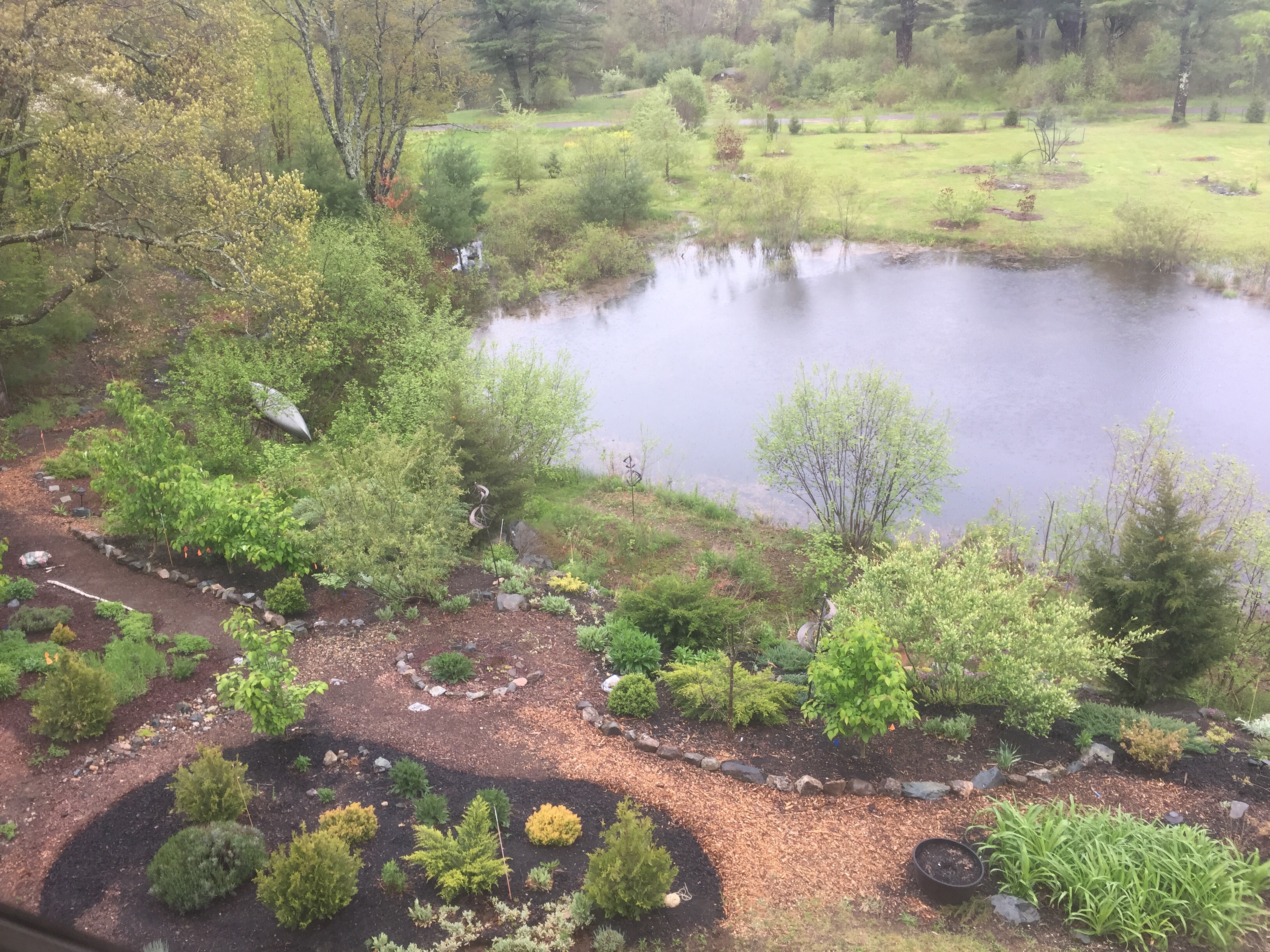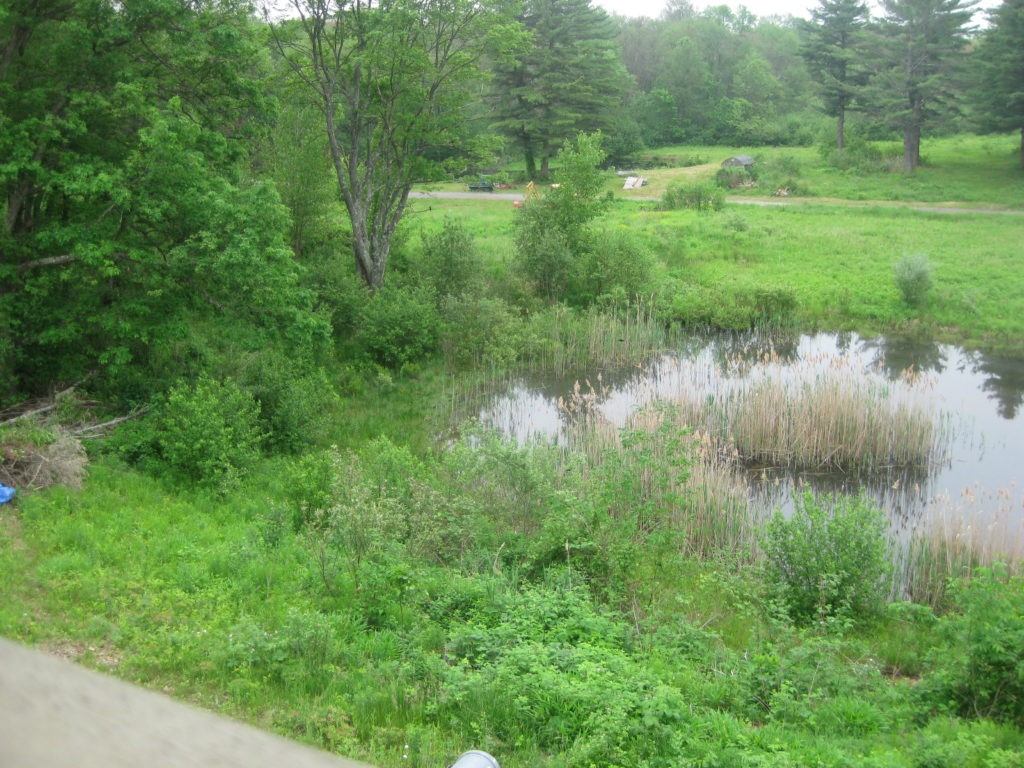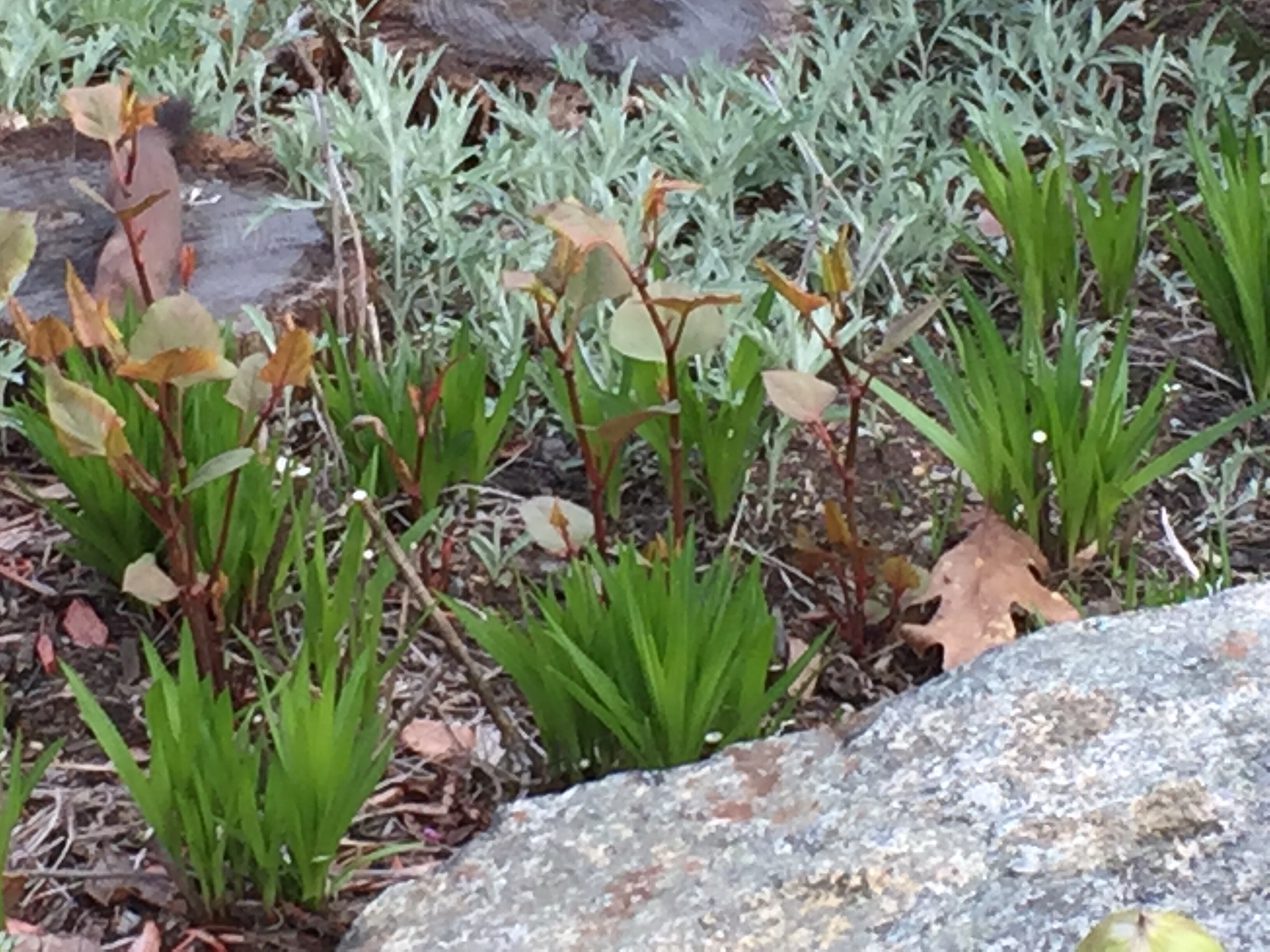Looking west, we maintain a path that winds along next to the pond, so we can monitor what’s growing there. Alders are easily pruned and bacteria around their roots fix nitrogen in the soil, so they’re generally encouraged. Other fantastic plants that love this area are clethra, joe pye and sweetgale (also a nitrogen fixer). This area was formerly full of invasive phragmites, loosestrife, buckthorn and bittersweet.
